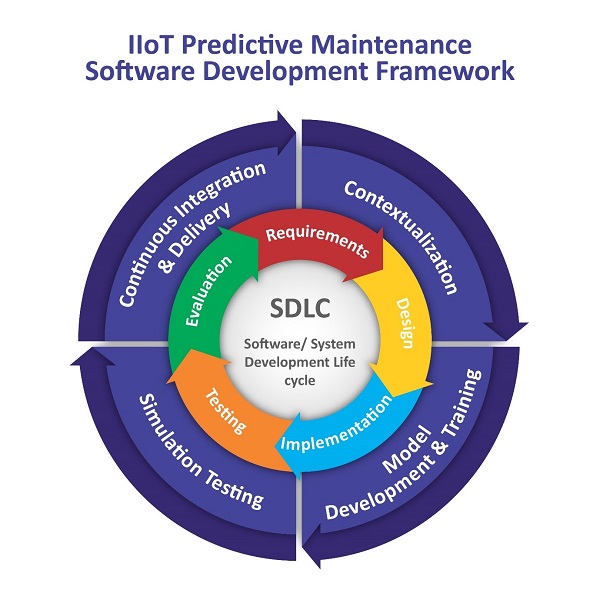Artificial Intelligence (AI) is being recognized as the next platform battle. As Wired Magazine noted, “Microsoft became the giant it is today because Windows was the place developers went to reach PC users.” As tech companies build their position, there is an active effort to recruit developers and end-users as a means of establishing a foothold within the industrial sector.
The marketing pitch is deceptively simple: As industrial plants struggle with the dearth of qualified big data experts to develop AI predictive maintenance, companies such as Google and Amazon claim that they can fill the void.
According to a blog post by Fei-Fei Li (Chief Scientist, Google Cloud AI and Machine Learning) and Jia Li (Head of R&D, Cloud AI), Google plans to “lower the barrier of entry and make AI available to the largest possible community of developers, researchers and businesses.” Cloud Auto-ML “enables developers with limited machine learning expertise to train high quality models by leveraging Google’s state of the art transfer learning, and Neural Architecture Search technology.” It offers a simple GUI that helps developers train and deploy models based on their own data.
Similarly, Amazon Machine Learning offers visualization tools and wizards to generate machine learning algorithms “without having to learn complex ML algorithms and technology.”
This article will address the following questions:
- Can machine learning managed services reduce the need for skilled big data scientists?
- What is the role for open source machine learning for IIoT predictive maintenance?
- What are the risks of using machine learning managed services for IIoT predictive maintenance?
- What are the requirements for IIoT predictive maintenance software?
- Are there ways to use IIoT predictive maintenance software without hiring big data scientists?
1. Can machine learning managed services reduce the need for skilled big data scientists?
At a high level, one can argue that the introduction of new AI tools is a positive development because they provide more options in the marketplace. However, the release of generic machine learning developer tools does not address the underlying needs for IIoT predictive maintenance, nor can it counter the lack of available big data scientists.
Industrial plants have two options for acquiring Industrial IoT predictive maintenance solutions: “build” or “buy.”
Let’s start with “build.” Building an in-house machine learning predictive maintenance solution requires two competencies: (1) experience with software development using the Software Development Lifecycle (SDLC) and (2) deep machine learning expertise.
Very few industrial entities have the internal resources to build custom AI solutions that can scale throughout their plants.
The second option for the industrial plant is to purchase commercial IIoT predictive maintenance technology: hardware, software or a combination thereof.
Google Auto-ML and Amazon Machine Learning are offering a seemingly attractive third alternative: access to machine learning tools without the need for deep machine learning internal competencies.
The reality is more complex.
The following chart depicts the process for building machine learning-based software. It is important to keep in mind that IIoT predictive maintenance software is different from generic “predictive” software. The contextualization of the solution is a critical component defining the design’s functional and technical specifications. For instance, does the solution address predictions of downtime for stone-crushers or electric generators? Is it suitable for renewable energy or a fossil fuel power plant?

Amazon and Google provide generic machine learning tools that are not customized to the needs of the vertical segment, workload or machinery type. Even qualified machine learning experts must select an algorithm from an machine learning library for the data that is analyzed. It is unrealistic to expect an unqualified technician to make decisions about which machine learning algorithm to select for a given data set. Furthermore, in the case of predictive maintenance, the skill-set requirements are even more complex: The industrial plant needs professionals with expertise in both the specific machinery and machine learning skills.
2. What is the role for open source machine learning for IIoT predictive maintenance?
Open source already plays an important role in the development of IIoT predictive maintenance software. Cloud Auto-ML and Amazon Machine Learning are not considered open source in the traditional sense.
What differentiates open source developer tools from Cloud Auto-ML and Amazon Machine Learning?
Open Source Software (OSS) is defined as “a type of computer software with its source code made available with a license in which the copyright holder provides the rights to study, change, and distribute the software to anyone and for any purpose.” Open source tools are actively used by highly trained machine learning / AI professionals.
The machine learning and AI community already relies on open source. Python is an open software development language that is commonly used. Both TensorFlow (an open source deep learning framework) and Keras (an open source neural networks wrapper library) are written in Python.
At their core, Cloud Auto-ML and Amazon Machine Learning are commercially available generic solutions designed to help unskilled / low-skilled developers bypass traditional IIoT predictive maintenance tools.
3. What are the risks of using machine learning managed services for IIoT predictive maintenance?
For the industrial sector, the risk is significant.
The introduction of new tools such as Amazon Machine Learning and Auto-ML is valuable only if they are used by big data professionals.
Unscheduled asset downtime costs the global process industry $50 billion a year. Increasing up-time offers industrial plants a significant financial opportunity. Amateurs are likely to make mistakes and waste time at the expense of their other responsibilities. Plant responsibilities placed in amateurs’ hands using machine learning platforms can result in significant revenue loss, failure and physical damages.
Implementing IIoT predictive maintenance requires more than finding a source of machine learning algorithms. From an organization and infrastructure perspective, there are serious commitments, including the adoption of new O&M processes.
Development of the core asset and intellectual property for IIoT cannot be left in the hands of unskilled employees who are likely to waste time on tedious and time-consuming trial and error. More importantly, without understanding the underlying process for developing a model, the inexperienced developer does not realize that a few months of operational deployment are necessary to determine whether the best model was selected. Trial and error leaves the industrial plant vulnerable to unforeseen consequences.
The potential impact to the business should not be overlooked. Missing evolving asset degradation and the threat of machinery breakdown risks production yield rates and revenue. The domino effect of poor maintenance standards impacts many aspects of industrial operations, including the health and safety of employees.
4. What are the requirements for IIoT predictive maintenance software?
IIoT predictive analytics applies advanced AI algorithms to the data generated by machine sensors. This is used to predict upcoming equipment failure. The goal is to reduce unscheduled asset downtime and increase production yield rates and revenue. Generic AI tools are not designed to perform specialized tasks such as identifying evolving asset degradation and providing a Root Cause Analysis.
No one-size-fits-all answer exists with respect to the requirements for commercially provided IIoT predictive maintenance software. Industrial plants must define functional requirements for the following:
- Interoperability / System Architecture
- Asset and Sensor Neutrality
- Alert Generation
- Machine Learning Methodology
- Asset Visualization
Additional non-functional specifications include the following:
- Scalability
- Performance
- Response Time
- Availability
- Stability
- Maintainability
- Usability
Based on the above, only a small component of an end-to-end IIoT predictive maintenance solution can be provided by generic machine learning software designed for non-technical users.
5. Are there ways to use IIoT predictive maintenance software without hiring big data scientists?
Google and Amazon are suggesting an either/or approach. Either hire highly skilled big data scientists or apply easy-to-use algorithms for predictive analytics.
There is also a third alternative for industrial plants to consider. There is a new class of commercial solutions that apply advanced AI algorithms to sensor data. Plant technicians receive alerts about upcoming failures and can dig in and remediate accordingly. Operations and Maintenance continues playing its vital role within the industrial plant without requiring that maintenance and reliability professionals gain expertise in big data or machine learning software platforms.
Summary and Conclusion
Ad-hoc open source tools that do not scale or address the specific predictive maintenance requirements of an industrial plant cannot be used to bypass the big data skill-set gap in the job market. Adding more tools and algorithms to the mix does not help unless the people tasked with AI have the necessary expertise.
Google and Amazon may have developed offerings with potential for non-commercial niches, but their application is not relevant to the industrial sector.
About the Author
 Deddy Lavid is CTO of Presenso. He is a senior algorithm and software developer and expert in the field of machine learning and big data architectures. Coming from RAFAEL, where he led a team of algorithm developers in large SW projects of some of national importance. Deddy holds Honors M.Sc. computer and information science.
Deddy Lavid is CTO of Presenso. He is a senior algorithm and software developer and expert in the field of machine learning and big data architectures. Coming from RAFAEL, where he led a team of algorithm developers in large SW projects of some of national importance. Deddy holds Honors M.Sc. computer and information science.
Sign up for the free insideBIGDATA newsletter.




Useful Information. Thanks for sharing